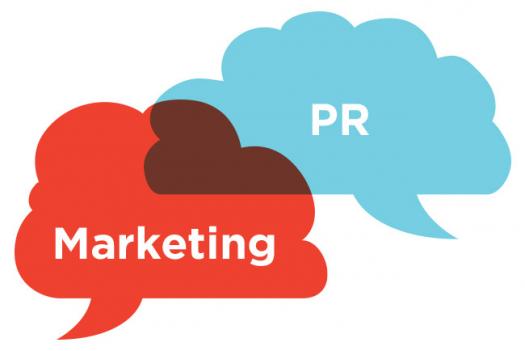When it comes to social media, a lot has changed in the last two years. But one trend remains the same. According to a recent survey by The Creative Group, more than half of advertising and marketing executives said public relations/communications teams are best suited to oversee a company’s social media activities. This figure is up from 39 percent in a similar study conducted in 2013, when PR/Comms also took the top spot. In both polls, marketing came in second. (View the infographic below for a breakdown of the results.)
But is one group really better suited for the job than the other? To find out, we consultedJim Lin, VP of Digital Strategy for Ketchum, a PR and marketing agency, and Ted Rubin, a leading social marketing strategist, to get their take on the topic. Read on and then let us know which camp you belong to.
Why is PR – or marketing – best suited to manage corporate social media activities?
Lin: PR is best suited for social media because social media is essentially a conversation. While marketing or ad firms own the message of a brand, the PR function owns the conversation about the brand. This used to be through traditional media, but now that social media has become another medium on which conversations about brands can occur, it’s naturally a dynamic best handled by PR. Marketing and advertising create the message around the brand, but their dynamic has always been broadcast. What PR agencies have done since the dawn of time is navigate unpredictable conversations. It used to be with journalists, but now it rests firmly with the consumer on social media.
Rubin: At the core, social media activities are a function of marketing, just as PR, communications and customer service should be. Marketing is the activity, set of institutions, and processes for creating, communicating, delivering and exchanging offerings that have value for customers, clients, partners and society at large. The CMO should oversee all marketing, PR, communications, customer service and customer experience management. Every touchpoint with the consumer needs to come under her purview. Often this is not the case: customer service and PR/communications are often siloed. This is a big mistake in the new marketing/social world since the message needs to emanate from one source. True marketers understand that they must be the lead stewards for brand, reputation, communication and customer relationships.
Are some tasks better suited to PR versus marketing – or vice versa – or another department entirely?
Lin: The core purpose of PR is to generate a conversation about the brand via third parties. Whether that be media, influencers or consumers (on social media), the PR professional is the most adept at thinking dynamically about that conversation. A PR professional is best equipped to predict red flags, deal with crises, steer the conversation and influence third parties.
Rubin: I believe a social mindset needs to be part of the culture and DNA of an organization so that every team can operate as needed day to day, all employees are empowered to support the brand and ongoing communication can occur. When social media operates from a separate group or location or from only one silo, there is a greater probability of poor integration with all other efforts that happen simultaneously every day. What needs to happen is that social media thinking and practice should be closely linked to the brand and customer teams so they are involved as soon as communication objectives have been established and daily needs surface.
How can teams collaborate to execute successful corporate social media programs?
Lin: The best teams are the ones where everyone is contributing where they are strongest. For social media, I recommend that marketing teams create the content and PR teams deploy and engage with whomever interacts with it. One often-underutilized team that I think more companies should tap into is customer service. These folks are directly communicating with consumers. They have an inherent understanding of the customer that no one else has. To leave them out of the social media equation is a mistake. When PR, marketing and customer service collaborate on social media strategy and execution, that’s when you will win.
Rubin: By having an integrated overall marketing strategy that includes social side by side with and a part of PR/comms, customer service and customer experience, the company’s management and execution of its customer and brand assets becomes seamless. All strategic elements come together and reflect a clear and consistent understanding of the value the company offers to its customers, community, employees and partners.

